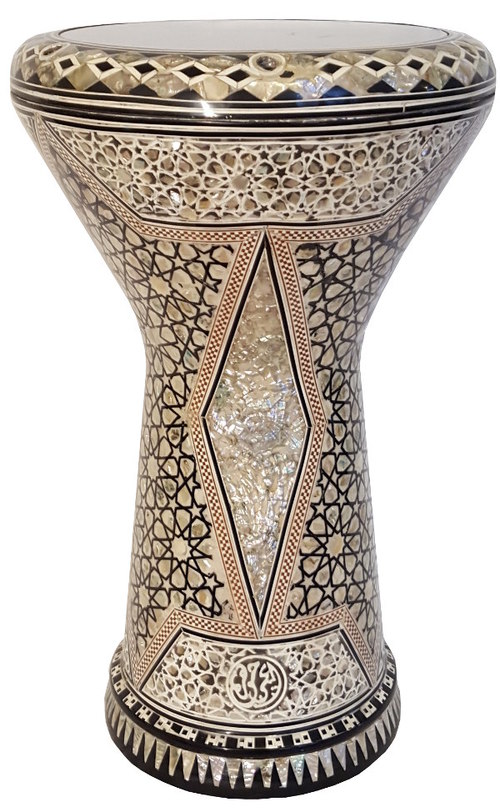Episode 7 Fact 1: Traditional Arab Percussion Instruments
Tablah / Darbuka
The Tablah/Darbuka is a single-headed hand drum and is the lead percussion instrument in traditional Arabic music. With a history that extends back to antiquity, this drum is found in a vast geographical domain stretching from Morocco in western North Africa, eastward through Egypt, Mesopotamia/Assyria and several Mediterranean countries.
Originally the goblet-shaped body (cylindrical with a slightly narrowed waist) was made out of fired clay and the sounding head out of goat, calf, or fish skin, stretched and glued permanently on the body. Since the mid 1980s, an instrument with plastic (mylar) head and a cast iron body with modifiable skin tension has become the norm.
Most tablah are intricately decorated, some with wood, tile or bone inlay, etched metal, or paintings of geometric or other designs typically found in the Middle East. The lugs and rim of the drum are exposed on the outside of the drum, allowing for an easier time with tuning and replacement. This also means that the drum itself has a much sharper sound when hit at the rim
Saed Raid on Darbuka (Click to view)
DUFF / RIQ
Duff or Riq, is a traditional Arab musical instrument previously made of a wooden frame, jingles and thin translucent heads made of fish skin. Today, the riq is typically made of metal that is covered on both sides. The cover of the riq is done in with fine ivory and wood decorative patterns that have small cymbals attached. The cymbals used in a riq are about 4cm in diameter and ten pairs in number that is again mounted in slits. It can be said that riq is a type of tambourine that is rapidly gaining popularity among both beginners and professional music lovers.
While playing a riq, the player alternates between shaking the jingles attached to the instrument and striking the membrane that produces a warm blend of jingling and thudding sound.




